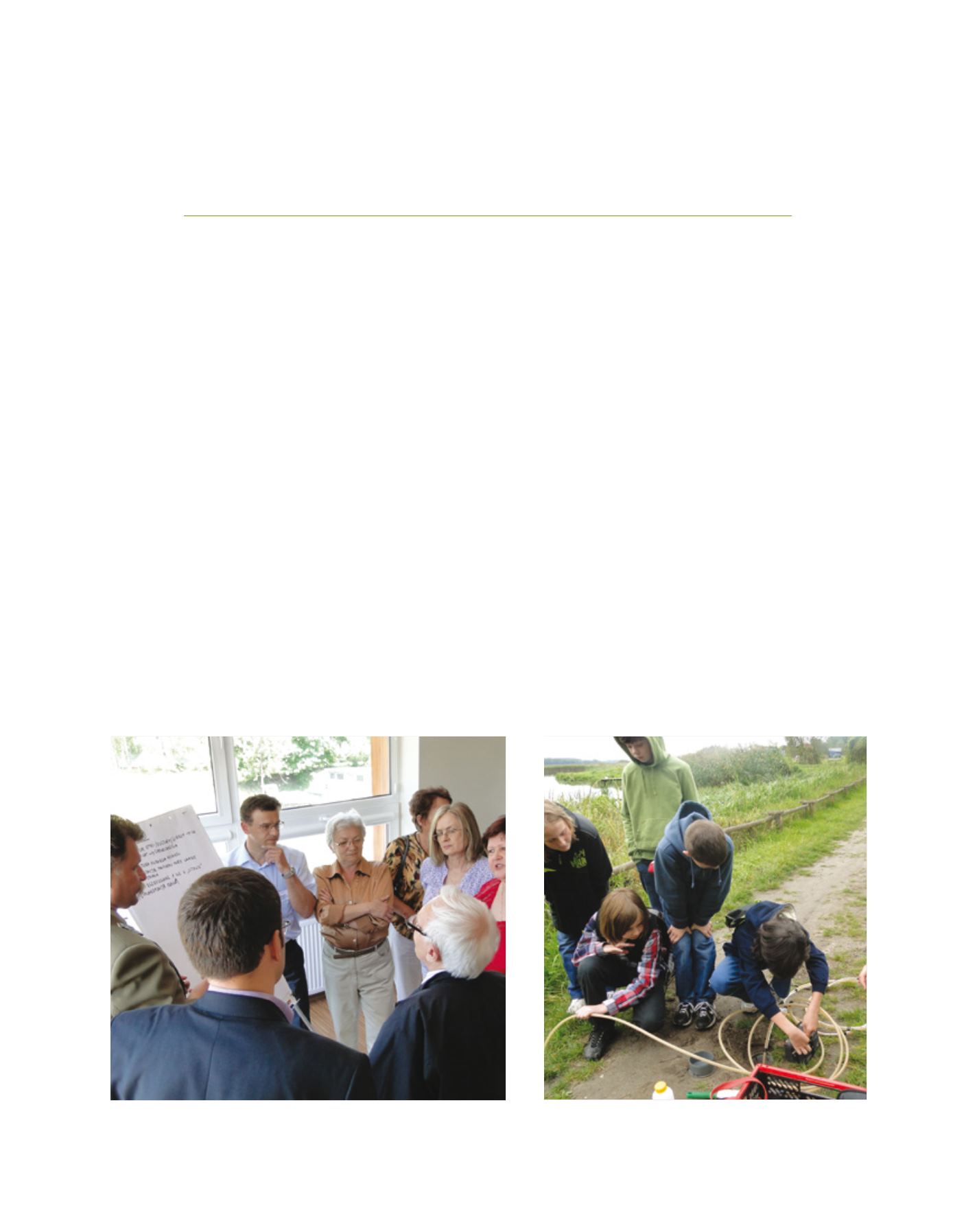

[
] 299
Ecohydrology – transdisciplinary sustainability
science for multicultural cooperation
Professor Macej Zalewski, Katarzyna Izydorczyk, Iwona Wagner, Associate Professor Joanna Mankiewicz-Boczek,
Magdalena Urbaniak, and Wojciech Fr
ą
tczak, European Regional Centre for Ecohydrology, Polish Academy of Sciences
G
lobalization has accelerated development and, in
general, improved the quality of life of humanity.
However, interconnected socioeconomic systems have
also accelerated and amplified the exploitation of natural
resources, which increases the risk of conflict.
Harmonizing human needs with the potential of the biosphere is
the primary challenge in achieving a sustainable future.
1
In order to
achieve global sustainability by reducing the overexploitation of natural
resources, there is an urgent need to replace competition for resource
use with competition for resource use efficiency. This is especially rele-
vant for water and ecosystem resources, as water is a primary factor of
biosphere dynamics. A sustainable approach must be based on integra-
tive science, with a focus on the integration of hydrology and ecology.
Ecohydrology is an integrative, transdisciplinary, problem-
solving science which focuses on the regulation of processes. It is
based on the general theories of physics, hydrology and ecology,
whose implicit goal is to achieve sustainability.
2
It also considers
geophysics, geology, molecular biology, genetics, geo-information
techniques, mathematical modelling with socioeconomic concepts
(such as foresight) and aspects of law.
3
Ecohydrology
is based on two assumptions:
• water is the major driver of biogeosphere evolution,
since all ecological processes depend on water and
temperature
4
• on the basin scale, the hydrological cycle is a
framework for quantifying hydrological and
biological processes and identifying various forms
of human impact.
An understanding of those two factors, and of the func-
tional interrelationships between hydrology and biota
at the catchment scale, should enable the regulation of
ecological processes from the molecular to the landscape
scale; the ultimate aim being to harmonize society’s needs
with an enhanced carrying capacity for ecosystems.
5
With this in mind, understanding the dependence
of ecosystem dynamics on soil water availability is a
fundamental step towards developing a methodology
and system approach at the river basin level.
6
Effective
I
nternational
C
ooperation
on
W
ater
S
ciences
and
R
esearch
Primary school students measuring the concentration of
nutrients in groundwater
Brainstorming with decision makers involved in water resources, agriculture, urban
areas, forests, planning and NGOs in the Pilica catchment
Image: ERCE
Image: ERCE


















